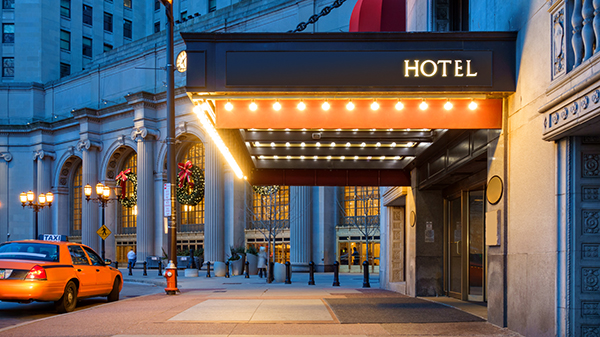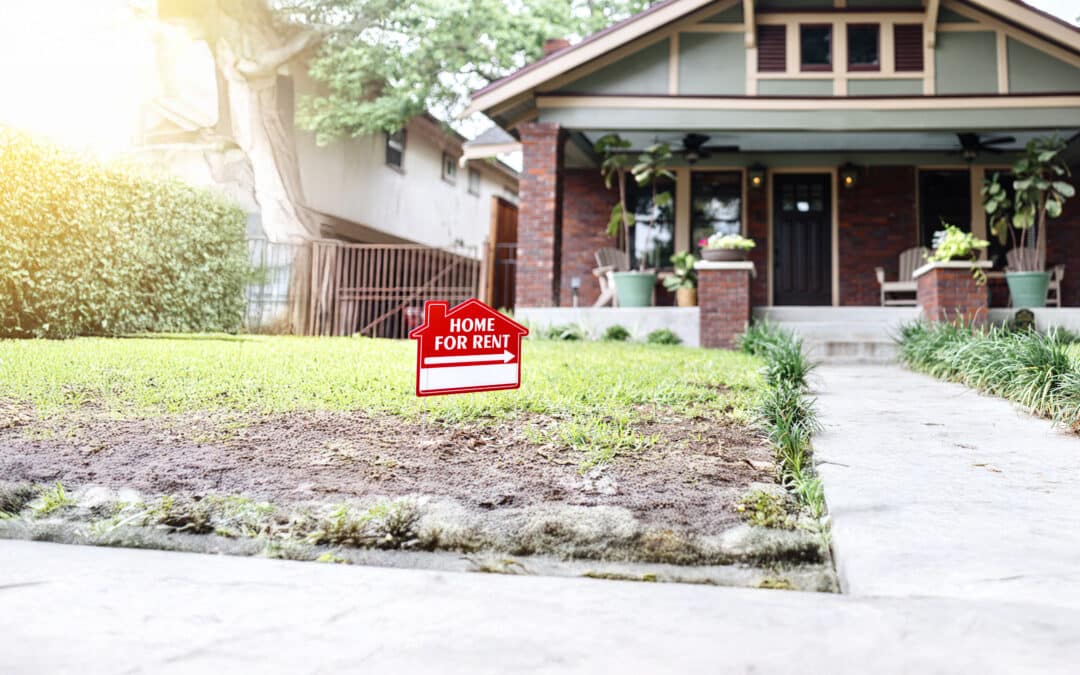Summer vacations jump-started recovery.
The U.S. lodging sector entered the autumn season having made up substantial ground during the spring and summer months. Loosened capacity restrictions, vaccine availability and pent-up travel demand led to a marked increase in trips taken and rooms occupied. By the end of July foot traffic through airport security checkpoints had recovered to about 80 percent of 2019 volumes, while hotel occupancy had roughly doubled from where it began 2021. Nightly rates improved even more notably, with the average daily rate for July surpassing the same metric from two years prior by 6 percent. Although partially mitigated by inflation, the rapid recovery in ADR underscored the strong demand to get away that manifested earlier this year. As the calendar advanced into the start of the academic year and colder weather, hotel bookings have begun to mildly slacken.
Summer to autumn transition reveals seasonal walk back in visitation.
From the start of August into the first weekend of October occupancy followed its traditional pattern, declining 630 basis points to 61.7 percent. The reduction was largely seasonal, with the start of in-person schooling limiting travel for many families. For the same window in 2019, occupancy fell by a similar 600-basis-point margin. Rising COVID-19 infection rates tied to the delta variant may have also weighed on travel plans. Of the areas reporting steep climbs in cases, many were also favored vacation spots. Moving into 2022 hotel room demand nationally will likely follow typical seasonal patterns while trailing pre-pandemic levels by a shrinking margin. Property performance will still vary significantly by location and service level, however.
Leisure demand still dominant in 2022.
Hotels in popular vacation destinations are projected to perform best next year, including those near beaches and parkland. These types of settings, including the Florida Keys, Colorado Springs and Virginia Beach, captured the most demand during the spring and summer. Hotels in drive-to locations reliant on regional vacationers will continue to draw travelers; however, they may lose some guests to more well-known areas as peoples’ comfort with flying improves and barriers to international travel lighten. Therefore, while leisure travel is expected to grow further in the coming year, room demand may be more diffused across markets as the overall economy will be more widely open.
Potent need to unwind lifts outlook for resorts next year.
Resorts are likely to benefit in the months ahead as vacationers venture farther and seek relaxing settings after a challenging period. As of August 2021, resorts were still about 15 percent less occupied on average than two years prior, although ADR had climbed 24 percent above the same benchmark. Higher nightly rates are offsetting fewer reservations, resulting in an above-pre-pandemic level of revenue per available room. Even if a price ceiling on ADR manifests, resort RevPAR should continue to improve in 2022 as occupancy levels climb closer to traditional levels, aided by more international visitors.
Business travel outlook mixed.
Hotels that cater to business travelers will continue to face hurdles next year. Travel for business purposes has so far lagged leisure trips in recovery. While vaccines and tests are widely available, the potential for new coronavirus variants presents ongoing safety concerns that will prompt many employers to minimize staff travel. As such, the number of business trips are likely to trail more traditional levels by a wider margin than the leisure segment. That does not mean business travel will not improve next year in comparison with 2021. Barring a significant reversion in the health crisis, more conventions and trade shows are scheduled in 2022 than last year, which should prompt greater professional travel.
Select number of hotels continue to be severely impaired.
Hotels in major urban centers and frequent convention markets will see improved operations in 2022 but will remain the most troubled segment. Through August of this year hotels in core areas reported RevPAR values more than 30 percent below levels from two years prior, a steeper margin than for most other hotels. The problem is compounded in the country’s largest gateway markets that typically cater to numerous international visitors, including New York and San Francisco. Both metros reported occupancy rates for the month of August that were 30 percentage points or more below the same period in 2019 and had the highest rate of temporary room closures. The return of certain health precautions in these metros may dissuade some visitation to the area until the pandemic notably improves. Overall, a prolonged drought in demand in many densely packed areas leaves a long road ahead for financial recovery.
After period of caution, investors clear the benches and pursue hotel deals.
Despite the lingering challenges facing the lodging sector, investors are showing no signs of backing off. Hotel transaction activity has surged this year, with more properties changing hands between April and September than in all of 2020. While ample capital was set aside at the onset of the health crisis, anticipating widespread discounting, actual distress has been comparatively limited. Competition for listings has instead lifted the average sale price for assets over the 12-month period ended in September to a new high of $117,000 per room. The mean cap rate over the same span was 8.3 percent, a compression relative to earlier in or even before the pandemic, when the average yield was in the mid- to high-8 percent zone. Buyers are gravitating to markets where hotels outperformed this year or are well positioned for next year. This includes assets in California, Florida, Texas and North Carolina. As more hotels report positive operations, investor criteria will widen. Even in more challenged environments such as New York, the investment pipeline is still larger than in recent pre-health crisis years as investors come off the sidelines. This behavior illustrates that while hotels across the country may follow more than one path forward in the coming months, the long-term outlook for the sector is overwhelmingly positive.
John Chang serves as the National Director of Research Services for Marcus & Millichap. He is responsible for the production of the firm’s vast array of commercial real estate research publications, tools and services. Under his leadership, Marcus & Millichap has become a leading source of market analysis, insight and forecasting, and the firm’s research is regularly quoted throughout the industry and in mainstream business media.
John oversees a team of dedicated real estate research professionals who produce the firm’s more than 1,000 annual market research publications and conference presentations. These detailed reports, analyses and presentations integrate economic and financial market trends with insights on all major commercial property types including: Hotels, Industrial, Manufactured Housing, Multifamily, Office, Medical Office, Retail Multi-Tenant, Retail Single-Tenant, Self-Storage and Seniors Housing.
John is a seasoned industry analyst who has been quoted in numerous publications and is an active member of the NMHC Research Foundation Advisory Committee, the ICSC North American Research Task Force and the NAIOP Research Foundation. He regularly presents at a wide range of conferences and events hosted by industry-leading organizations such as the NMHC, NAIOP, ULI, CCIM, ICSC, SSA and numerous others.
John joined Marcus & Millichap in April 1997 as a Research Manager in the Seattle office. After holding executive marketing and e-business positions with premier residential real estate firms in the Pacific Northwest, he rejoined Marcus & Millichap in November 2007 as the head of its Research Services division. John was elected as Vice President in 2010, advanced to First Vice President in 2013 and promoted to Senior Vice President in 2018.























0 Comments